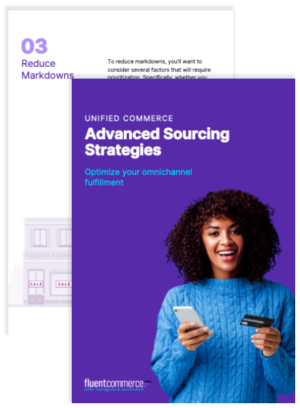Some things improve with age. Think cheddar cheese, balsamic vinegar, cast iron skillets, and of course, fine wine. But unfortunately, inventory doesn’t age well. The longer you own it the less profitable it becomes. When inventory is the largest asset on your balance sheet, and consumer demand is severely disrupted, that’s a problem. It means you need new strategies for the new normal. Let’s look at some examples.
1. Expand the life of inventory with smart product bundles
How do you make a collection live longer? Can you bundle items (e.g. summer t-shirt with spring/fall hoodie or cardigans) and market them as a set? Or mix and match new combinations to target remote workers on video calls – like comfy loungewear on the bottom, combined with a slightly dressier top and cardigan or jacket?
Alternatively can you bundle items around a theme or experience that can be enjoyed at home, like a cookbook and utensils for ‘Pasta Night’ or camping chairs with blankets and candles for a makeshift ‘Campfire Night’. Or bundles of beauty products for ‘Home Spa Days’. And if you sell ‘essential’ products, you might want to start thinking about new ways to segment your inventory.
2. Essential vs Non-Essential Inventory Categories
We never used to think about inventory in terms of ‘essential’ and ‘non essential’, but given recent events, it’s probably a good idea to consider if it makes sense to segment products this way in the future. It might be through new product attributes, categories, or a combination of both.
Ultimately, your approach to segmentation will depend on how you want to use the data. For example, you might use it to prioritize certain SKUs and categories over others in your fulfillment process. Or use it to drive online merchandising. Because even as markets open up, change will be gradual, so there will continue to be more demand for ‘essentials’. But what is classified as essential will probably change over time. So you’ll want to stay on top of the latest trends.
3. Track Consumer Trends
Demand has shifted over time. Walmart CEO, Doug McMillon, noted that while initially everyone was stocking up on food and other consumables like toilet paper, it then shifted to entertainment and puzzles, then personal grooming. Expect those trends to continue to evolve.
While your own sales data is a great place to start, here are two other sources worth looking at:
- McKinsey & Company has established a global Consumer Sentiment Survey, which is being updated weekly, and provides insights into consumer confidence and trends.
- Glimpse, a platform that analyzes hundreds of millions of consumer behavior signals from across the web to surface topics with rapidly growing or declining popularity, has released a COVID-19 Consumer Impact Tracker.
But as trends are constantly changing, many retailers are looking to take cues from fast fashion.
4. Smaller, more agile buys
As trends are constantly changing, many retailers are looking to take cues from fast fashion.
One thing fast fashion does well is adapt. Trends shift and change quickly. This means that fast fashion retailers buy small lots often. And because they change many of their vendors every few months, they’ve optimized their processes for onboarding and offboarding suppliers. In the short term, would it benefit you to be able to quickly and efficiently add and remove suppliers? Does it make sense to buy smaller lots so you can adjust to change quickly and make more incremental decisions?
And what about the long term? While small buys are one way to increase agility, let’s look at another that will become more important.
5. Near Shore Sourcing
For many years the big push was Low-Cost Country Sourcing (LCCS) – a quest to find the lowest cost supplier in the battle to stay competitive. But more recently we’ve seen attitudes shift. Many brands were already looking to reduce their dependence on China and other low cost suppliers. But now it’s not just about cost. It’s about agility.
How do I cut time out of my supply chain?
How do I cut lead times down?
How do I get closer to market so I can adapt to change more quickly?
These are all great questions for your future inventory strategy, but there’s another pressing question. What can you do today?
6. Minimize moves
Don’t move inventory unless absolutely necessary. All it does is add cost. So, unless there’s a compelling, well thought out plan (like rerouting in-flight inventory to a more seasonally appropriate location), your best bet is to ship inventory from its current location in your distribution network. For much of that inventory, it means turning your stores into mini Distribution Centers (DCs), like Bed Bath & Beyond in the United States, and B&Q, subsidiary of Kingfisher plc, in the United Kingdom.
7. Ship from Store
How do you make every location in your network a DC? First you need to know what you have where. Do you have the labor to get cycle counts done now? Even before stores reopen?
Once you have an accurate inventory picture, does it make sense to have a team in each store? Or do you have regional teams that move from store to store, shipping some orders from each store each day? And if you’re not set up for standard courier pickups, can your staff do deliveries? Or can you use a service like Uber Direct?
Summary
Going forward supply chain flexibility is going to be critical. And to be flexible you need real-time inventory visibility, and the ability to adapt to change quickly. That means flexible fulfillment location and network management. Fulfillment rules that are easy to edit. And faster onboarding and offboarding of vendors. Are you ready for the new normal?
For more information on how Fluent Order Management can help you get better inventory visibility and more flexible control over your fulfillment network and order fulfillment processes, Request a Demo today.




